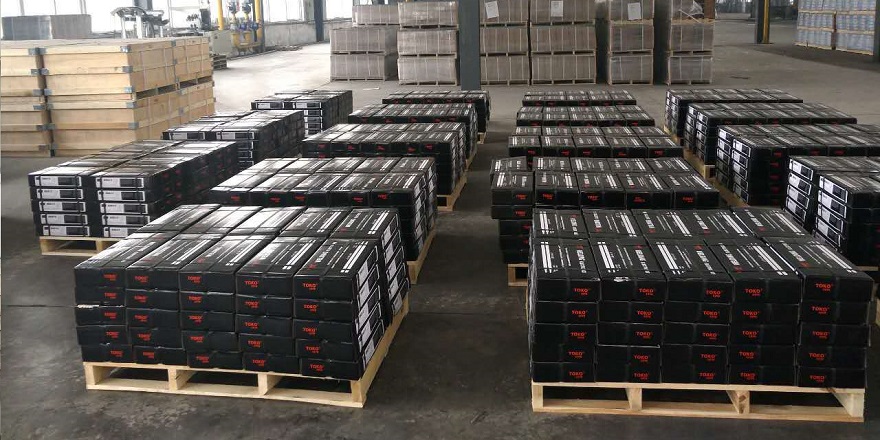
TOKO AWS A5.1 E7018 welding rods are a type of carbon steel welding rod with a low-hydrogen potassium coating. This type of rod is also known as a "low-alloy" rod, as it contains a small amount of alloying elements to improve its mechanical properties.
E7018 rods are designed for use with both alternating current (AC) and direct current (DC), and can be used in all positions, including flat, horizontal, vertical, and overhead. The low-hydrogen coating of the rod helps to prevent hydrogen-induced cracking in the weld, making it suitable for welding high-strength and high-tensile steels.
E7018 rods have excellent arc stability and produce a smooth, slag-free weld bead. They are easy to strike and restart, and produce a strong, ductile weld that is resistant to cracking. These rods are commonly used in heavy-duty welding applications, such as welding bridge girders, heavy machinery, and shipbuilding.
AWS
A5.1 E7018 Characteristics Some of the key characteristics of E7018 welding rods include: 1. Excellent Operating Performance: The iron powder coating of E7018 welding rods provides excellent operating performance,including easy ignition and re-ignition, and a stable arc.
2. Versatile: These rods can be used for welding a wide range of materials, including carbon steel and low alloy steel.
3. High Strength: E7018 welding rods produce strong,high-quality welds that are resistant to cracking and other failures.
4. Low Hydrogen Content: The low hydrogen potassium coating of these rods helps to reduce the risk of hydrogen-related welding defects such as porosity and cracking.
5. Good Weld Appearance: The welds produced by E7018 welding rods have a smooth and uniform appearance, which is aesthetically pleasing.
Overall, E7018 welding rods are reliable and effective for a wide range of welding applications, providing strong, high-quality welds with excellent operating performance.
Keep your welding arc tight and concentrate the heat at the weld joint. Wider arc results in a wider weld. The wider weld may distort the workpiece and dislodge the filler material where it’s not needed.
The groove of base metal should be cleared impurities away and the electrode must be baked at 400℃ then be held 1-2 hours before welding, 2.5mm or less one should be done by 350℃ then be held 1 hour.
Chemical Composition of
Deposited Metal (%) :
C
Mn
Si
S
P
Ni
Cr
Mo
Standard
≤0.15
≤1.60
≤0.75
≤0.035
≤0.040
≤0.30
≤0.20
≤0.30
Typical
0.068
1.36
0.51
0.010
0.016
0.022
0.016
0.010
Mechanical Properties of
Deposited metal (AW) :
Yield Point Reh (Mpa)
Tensile Strength Rm (Mpa)
Elongation (%)
Impact Value(J)
-20 ℃
Standard
≥375
490-660
≥22
≥47(Average)
Typical
440
540
30
150
Size(mm)
2.5×350
3.2×350
4.0×400
4.0×450
5.0×400
5.0×450
Pieces(5kg)
≈248
≈145
≈85
≈75
≈51
≈45
Current(A)
F,H
70-100
100-140
140-170
140-170
190-240
190-240
The information contained or
otherwise referenced herein is
presented only as “typical”
without guarantee or warranty,
and TOKO
Corporation expressly disclaims
any liability incurred from any
reliance thereon. Typical data
and Test results for mechanical
properties, deposit or electrode
composition and other properties
were obtained from a weld
produced and tested according to
prescribed standards, and should
not be assumed to be the
expected results in a particular
application or weldment. Actual
results will vary depending on
many factors, including, but not
limited to, weld procedure,
plate chemistry and temperature,
weldment design and fabrication
methods. Users are cautioned to
confirm by qualification
testing, or other appropriate
means, the suitability of any
welding consumable and procedure
before use in the intended
application.



